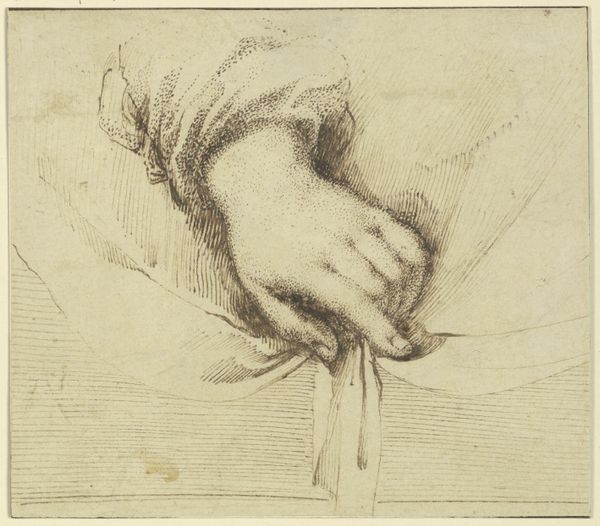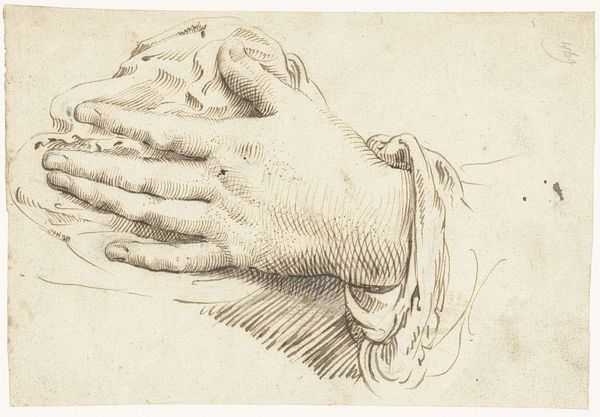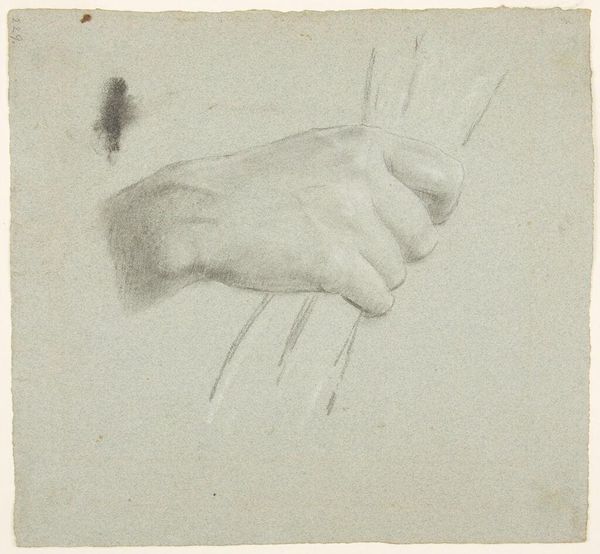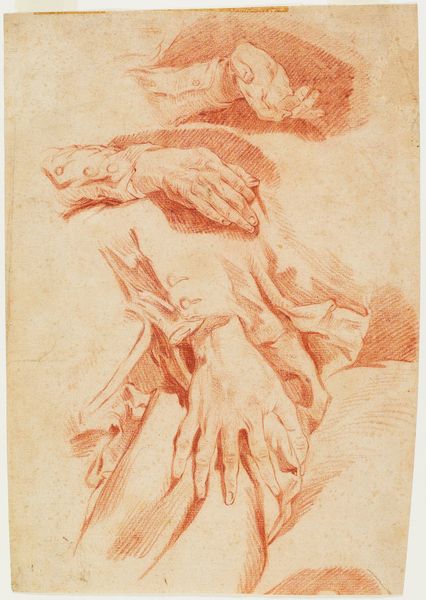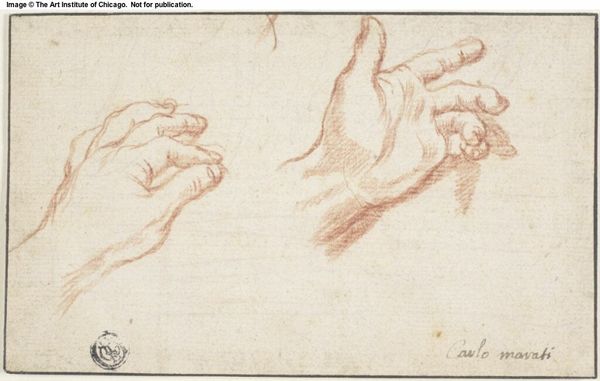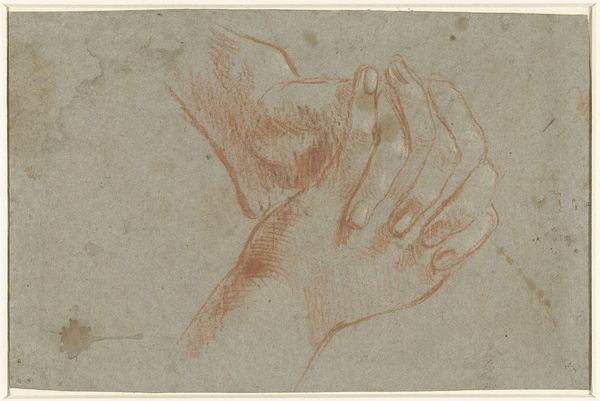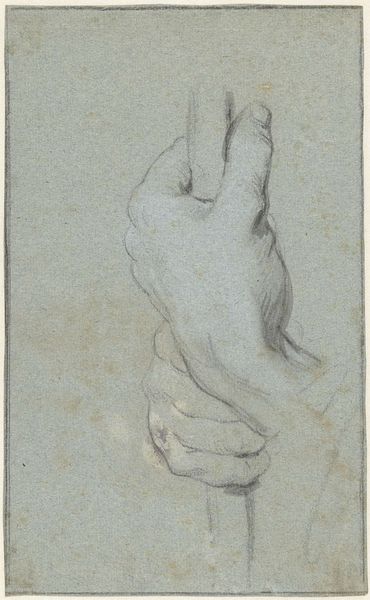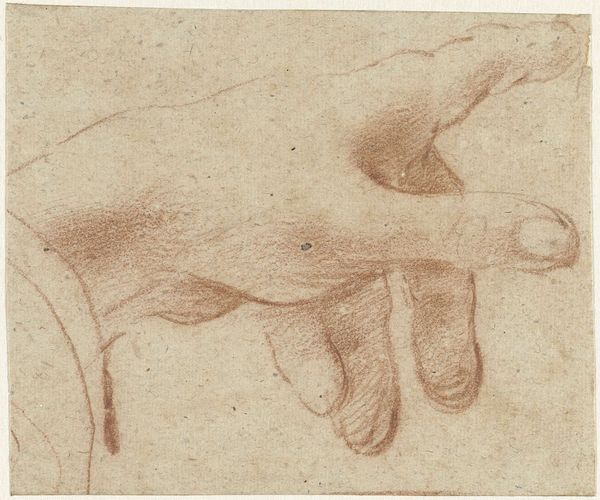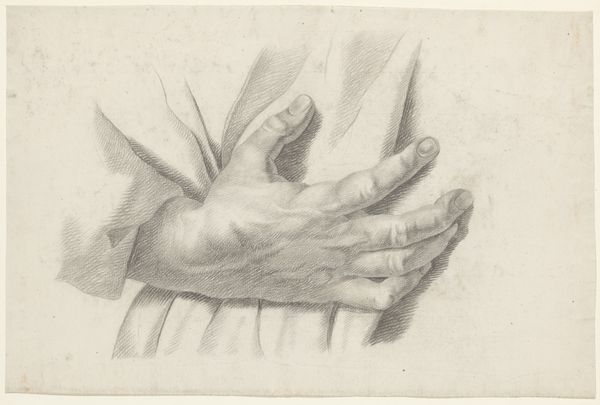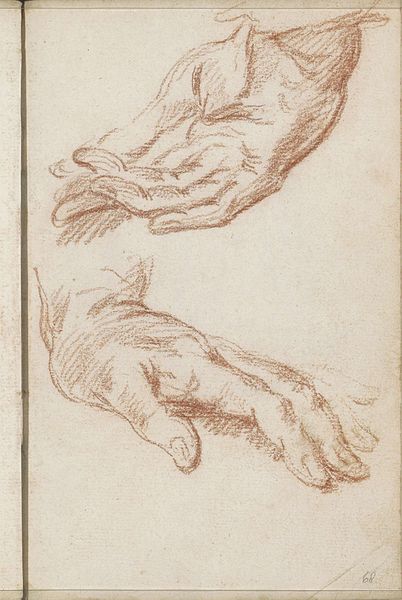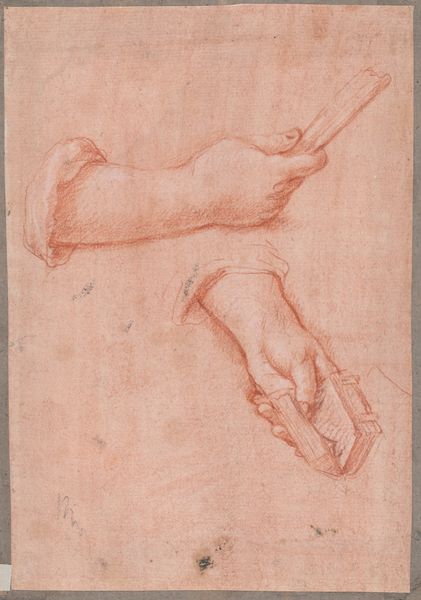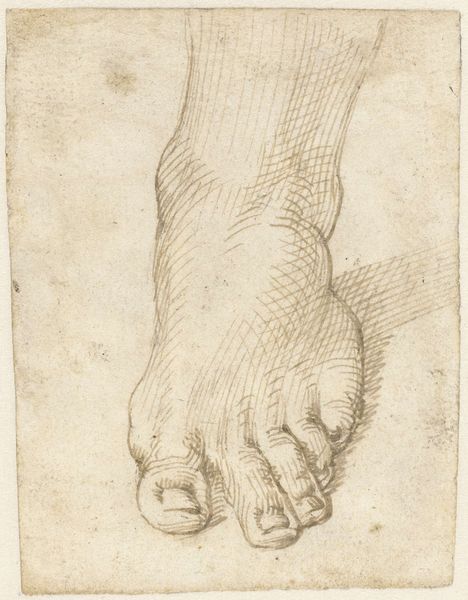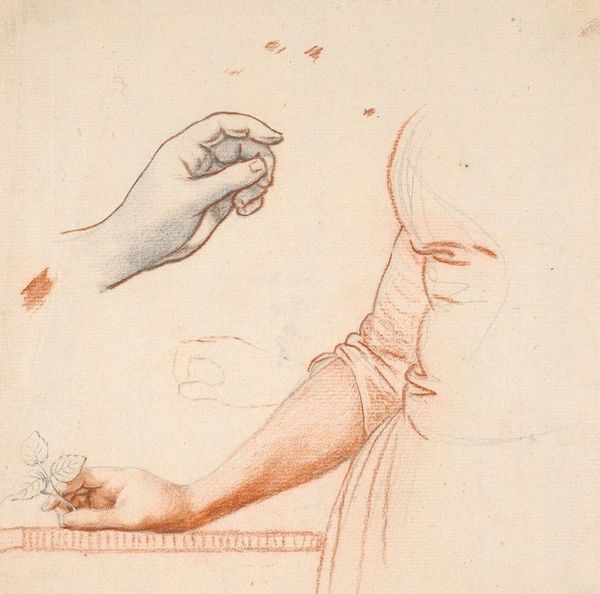
drawing, paper, pencil
#
portrait
#
drawing
#
dutch-golden-age
#
pencil sketch
#
figuration
#
paper
#
pencil
#
line
#
academic-art
#
realism
Dimensions: height 160 mm, width 207 mm
Copyright: Rijks Museum: Open Domain
Curator: So, we have here, “Study of a Closed Hand” by Moses ter Borch, circa 1656-1657, a red chalk drawing on paper. What strikes you about it? Editor: Well, it's a fairly simple sketch, but the texture that he’s able to create with just pencil and paper is really compelling, and gives it a very tangible quality. I’m wondering, what's so special about a study of just a hand? Curator: Notice the paper, the evident texture and the discoloration—how might the cost of materials during the Dutch Golden Age have impacted the choice to create studies like these? Furthermore, who would have had access to drawing materials and the leisure time required for artistic pursuits? This wasn't just about aesthetics; it was about access and privilege shaping what was made. Editor: That’s a great point! The paper does look aged, almost like it was meant for practice or something more functional. So, you're saying that even the materials themselves are reflective of a certain societal structure at that time? Curator: Precisely! Red chalk itself was a commodity. Its availability, quality, and even its color could be affected by trade routes, mining practices, and artistic patronage. Who benefitted from its extraction, its sale, and its artistic utilization? We need to consider not just the artistic skill involved but the whole network of labour and material that made this image possible. Editor: So, the artist’s technical skill in rendering the hand isn’t the whole story. There’s a bigger picture about who had the means to even make such a study. Curator: Exactly. By examining the 'how' and 'why' of its making, we gain insight into the economic and social realities embedded in Dutch Golden Age art. Does considering the social history in which this piece was made shift how you see it? Editor: Absolutely. I initially focused on the art itself. I'm starting to think more about who made this art, and how their status played a role in them doing that kind of artwork. It adds a whole new dimension to my understanding. Curator: And hopefully, it prompts you to look beyond the surface of art objects and ask questions about production and power dynamics.
Comments
No comments
Be the first to comment and join the conversation on the ultimate creative platform.
